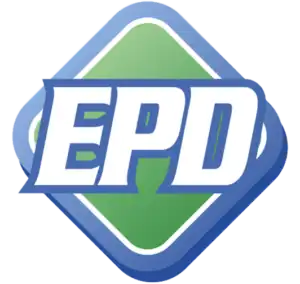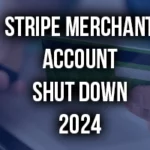Turns out they’re one of the major ways money is moved in the U.S.
In fact, according to Nacha (previously known as the National Automated Clearing House Association), the ACH network moved around $26.8 billion dollars in payments in 2020.
That’s a lot of money.
But what is the ACH Network, and how does it work?
What Does ACH Mean?
ACH is an acronym that stands for Automated Clearing House.
It is an electronic network used to move money among bank accounts in the United States. And only the U.S. — the ACH network is not currently outside the country, although “Global ACH” is in development.
The ACH system is used by banks and other financial organizations to batch transactions and collect them together for processing.
This typically takes place three times every business day.
What Types of ACH Payments are There?
ACH payments (made via bank transfer) are good for both the sender and the receiver.
The sender doesn’t have to write a paper check, enter it into their ledger, and wait for it to clear.
And the receiver gets to have money dropped into their bank account without any intervention on their part.
What’s not to love?
You can still do those things if you want to. But ACH payments enable people to:
- Send money securely
- Receive money conveniently
And you get to do it all without leaving your house!
The ACH Network handles two different types of transactions: Direct payments and direct deposits.
ACH Direct Payments
Anyone can use ACH direct payments. This includes businesses, non-profits, and individuals.
For instance, when you use your bank’s website to pay a bill online, that goes through the ACH Network as a direct payment.
Social payment apps such as Facebook Pay, Zelle, and Venmo also use the same network to send money directly to family and friends who also have bank accounts.
When an ACH direct payment is processed, the entity sending the money (remember, it can be a person or a business) will see an “ACH debit” show up in their bank account.
This entry will tell you who the payee is, and how much. The entity the money is being sent to will see a similar “ACH credit” notice.
ACH transfers are quick. They’re faster than a paper check, anyway.
And they’re free — not only do you not have to buy the checks, but ACH payments are usually easier on both parties of the transaction.
When you send through the ACH network, those are ACH direct payments.
And when you receive money, that’s with an ACH direct deposit.
ACH Direct Deposits
ACH direct deposits include any type of electronic payment that happens between a government or business entity and an individual person.
If you got your IRS refund electronically, that happened through ACH.
The ACH Network is also used to process paychecks.
The following are also paid out through the ACH Network:
- Government Benefits
- Interest Payments
- Annuity Payments
- Employer-Reimbursed Expenses
ACH Payments: How Do They Work?
If you ever wondered what happens during the process of ACH payments, read on!
How ACH Payments Work: Initiating
Any entity wanting to make an ACH payment first has to decide on who they’re paying, and how much. They have to give the go-ahead, just as they might sign a credit card receipt or a paper check.
This is done with an ACH authorization form. It can also be verbally agreed to in a recorded phone call.
One of the great things about ACH is that when mutually agreed upon, a user of the network can make recurring payments, a sequence of payments that happen on specific dates, or even just one single payment.
How ACH Payments Work: Receiving
Once authorized, the ACH Network will pull the payment from the payer’s bank account and deposit it into the payee’s bank account.
This electronic magic typically happens within a matter of hours or even minutes.
At one time, users of the ACH Network had to wait for three to five days. Now, however, Nacha has introduced some new rules for same-day processing.
Usually, the only delay someone might find in the ACH payment network is when an ACH transfer “bounces.”
That happens when the payer does not have sufficient funds in their bank account to cover the transfer.
Similar to paper checks, ACH transfers can’t happen if there isn’t enough money in the payer’s bank account to cover them.
What Makes ACH Payments Different?
On the surface, ACH payments are similar to eChecks, wire transfers, and debit card transactions.
Actually, the way they are processed varies greatly.
ACH Payments and eChecks
At one time you might have heard the terms “ACH Payment” and “eCheck” used synonymously. That similarity comes from the fact they both electronically move funds between two different bank accounts.
However, ACH transactions rely on bank account information held by a merchant.
This is what makes ACH payments repeatable. Whereas eCheck are ACH transfers meant to be completed one time (and one time only).
ACH Payments and Debit Cards
Both debit card and ACH transactions pull money from a user’s bank account. But they accomplish the same task through different means.
Simply put, ACH and debit cards are each processed by a different partner.
So ACH payments will often have different costs per transaction and different policies for dispute resolution.
Not only that, but ACH fees tend to work out better for small businesses owners, as compared to those on credit or debit card transactions.
ACH Payments and Wire Transfers
Wire transfers are very different.
Think of a wire transfer as a road a bank builds directly to another bank. This road is used to verify that funds are present, to move the funds, and then to complete the transaction.
When a wire transfer is made, the originating bank and the receiving bank both have to do work to set the transfer up. That’s why both the sender and the receiver have to pay a fee.
Once it is completed, this road is never used again.
On the other hand, these transactions move through the Automated Clearing House ACH.
The ACH is an electronic highway, which banks can use to move funds between accounts — as opposed to building roads that are used only once.
The Pros of ACH Payments
Using the already-built infrastructure built between banks, the ACH Network conveys significant benefits to individuals and businesses needing to move money regularly.
ACH Payments are Quick and Convenient
Typically, ACH payments are settled the day after they are initiated.
According to Nacha’s rules, credits must be settled in no more than two business days, and debits must settle no later than the next business day.
Not only that, but an ACH payment is convenient.
Paying your rent, cable bill, or any other recurring monthly expense by using an ACH payment will be much less time-consuming than filling out a paper check and putting it in the mail.
And you won’t have to pay to put a stamp on it!
ACH Payments Cost Less
Processing fees for credit and debit cards can be pretty high.
Sending an ACH payment, though, usually costs less than 50¢ per transaction.
Consumers don’t need to worry much about credit card processing fees. As a small business owner, though, or a freelance worker, getting paid via ACH can often lead to lower processing costs.
If you pass those savings on to your customers, ACH payments can mean lower costs for them too.
ACH Payments are More Secure
If you’re used to mailing paper checks, you’re aware there’s a chance it might get stolen or lost between here and there.
If that happens, it’s possible the thief might alter and cash the check before you know it’s missing.
And if your paper check never gets to your mortgage company, they might charge you a late fee.
If you end up needing to put a stop payment on the missing check, your bank will charge you $25-$35 to actually stop that payment.
On the other hand, though, when you move your money electronically through the ACH Network, all of your information is secured with bank-level encryption.
The Cons of ACH Payments
As great as ACH payments are, there are still some downsides to them.
ACH Payments Have Transfer Limits
Nacha, the organization that oversees the ACH Network, has rules that cap ACH transactions at $25,000.
For an individual, this is more than enough.
But some businesses or other organizations might need to make loan payments for more than that. And that is just one example.
Not only that, but if a bank account is classified as “savings” or “money market,” only six transfers per month can be made.
These limits do not apply to checking accounts.
Should you happen to go over that limit, the bank might reject the request for transfer, charge a fee for exceeding your withdrawal limit, convert it to a checking account, or even close it outright.
The Federal Reserve Board temporarily lifted this rule, known as Regulation D, because of the COVID-19 pandemic. But the agency hasn’t yet announced how long it will waive those transaction limits.
According to Investopedia, the coronavirus pandemic has caused the Federal Reserve Board to temporarily suspend this rule. However, they have yet to announce when these limits will be reinstated.
The Proper Timing of ACH Payments
Banks process ACH payments several times a day. But not every bank processes them at the same time.
Check with your bank to see if there’s a time you’ll need to get your transfer in before so as to have it credited the next business day.
In case you start the ACH transfer after that cutoff time, it might result in a delay.
This might be an issue for you if you’re trying to pay your bills on time.
Though ACH payments are pretty fast most of the time, they are still fairly slow, when compared to credit and debit cards.
All that said, Nacha reports that the use of Same-Day ACH is growing swiftly.
The Final Word
An ACH payment is a great and trouble-free way to send money – or to receive it.
Either way, though, it’s important to understand the policies your bank uses for ACH direct payments and direct deposits.
Also since the ACH Network has been around for a long time, it’s a favorite target for scammers.
It’s crucial you’re vigilant.
In one common scam, for instance, someone will send you an email with good news.
You’re owed money! And all you have to do to get it is to provide your banking information – your account number and bank’s routing number.
Although it’s easy to be taken in by these scams, it’s also important to remember: If something sounds too good to be true, it likely is.










